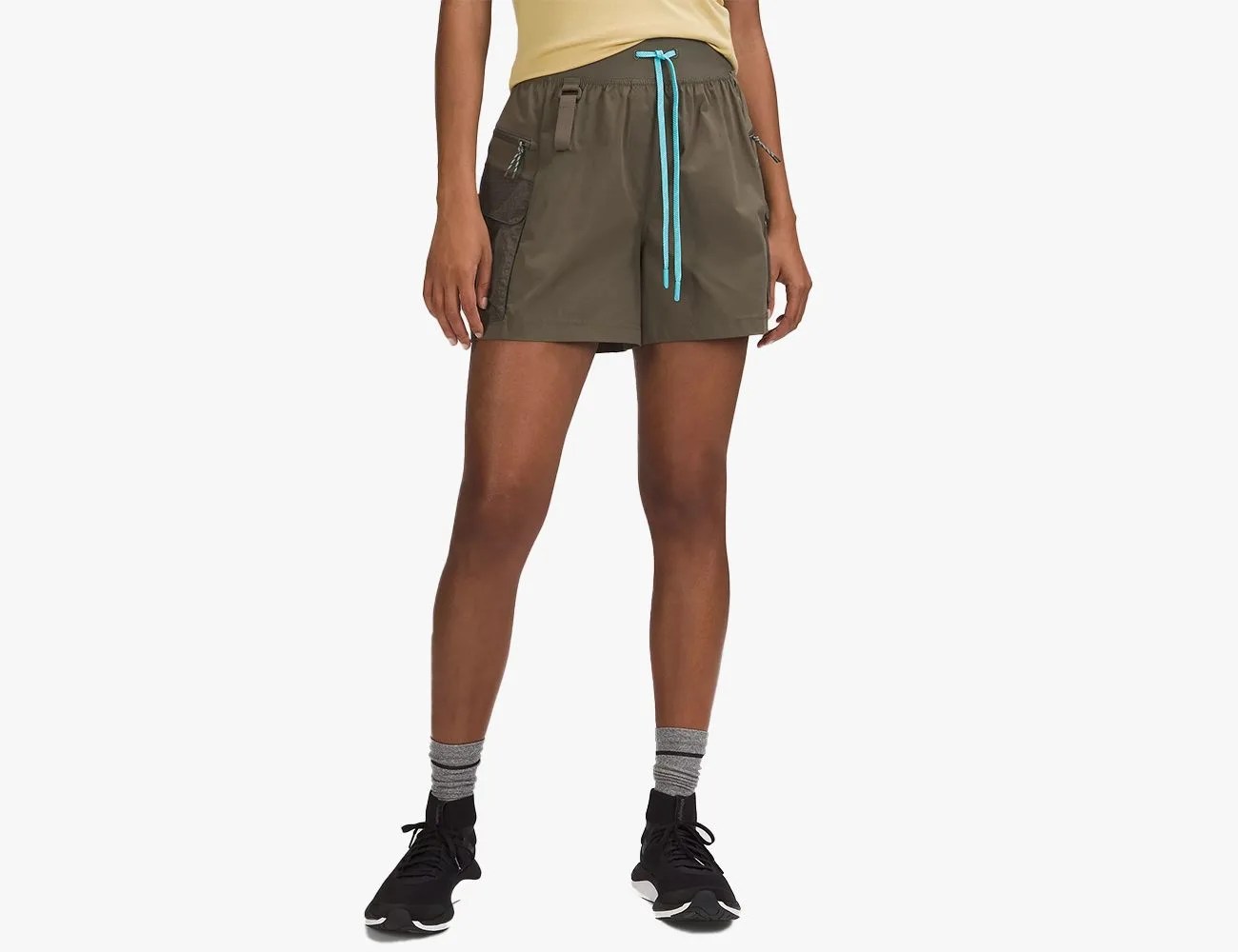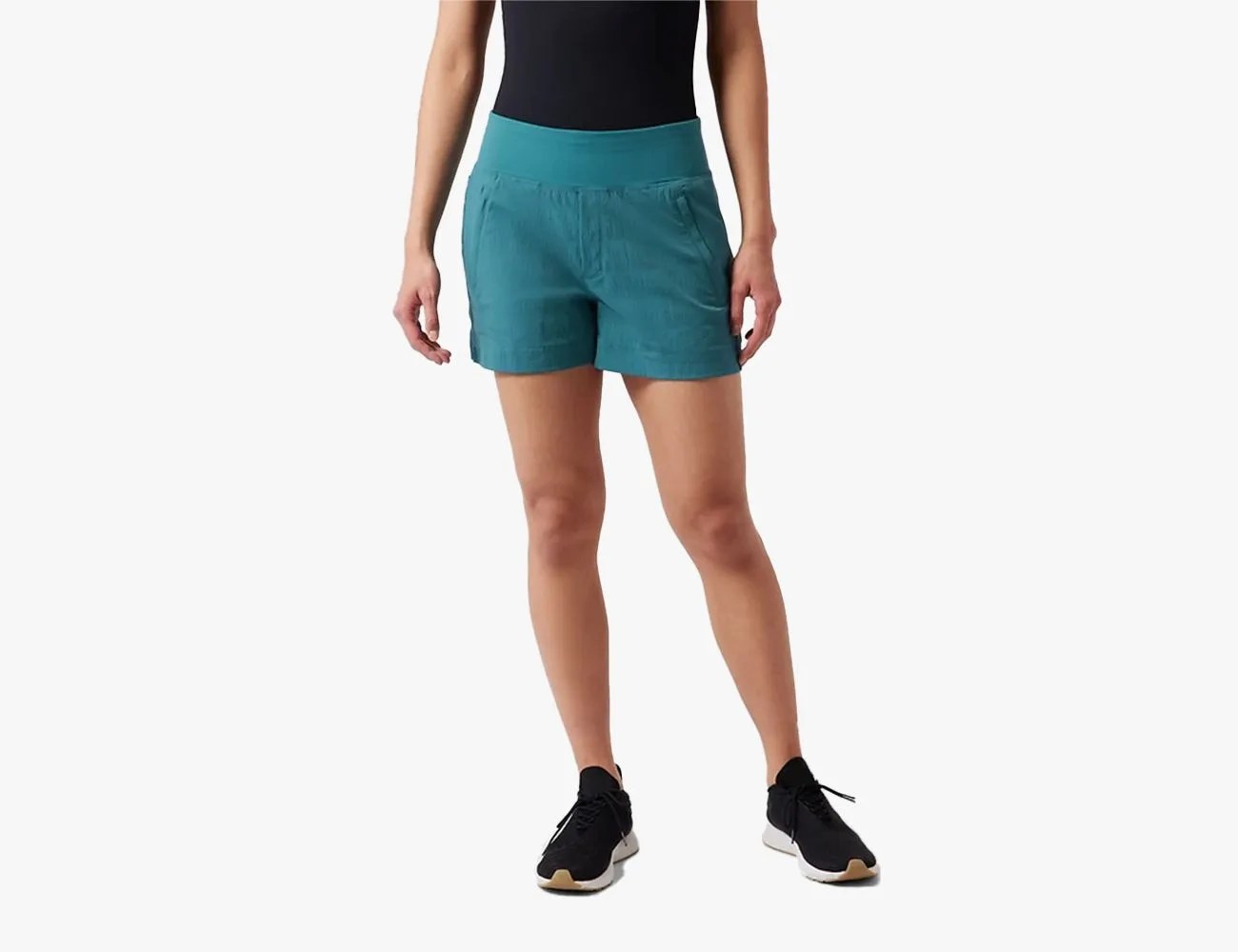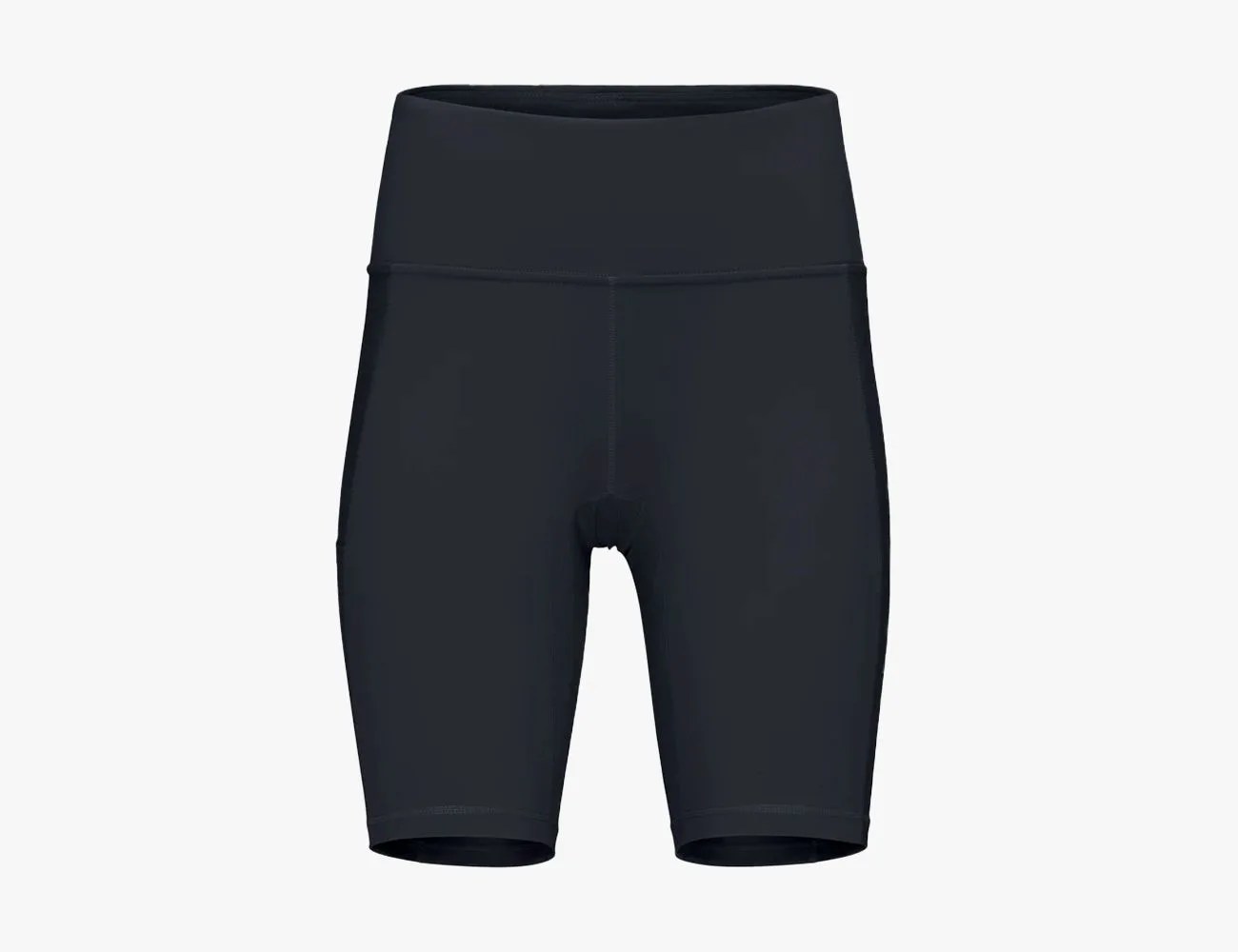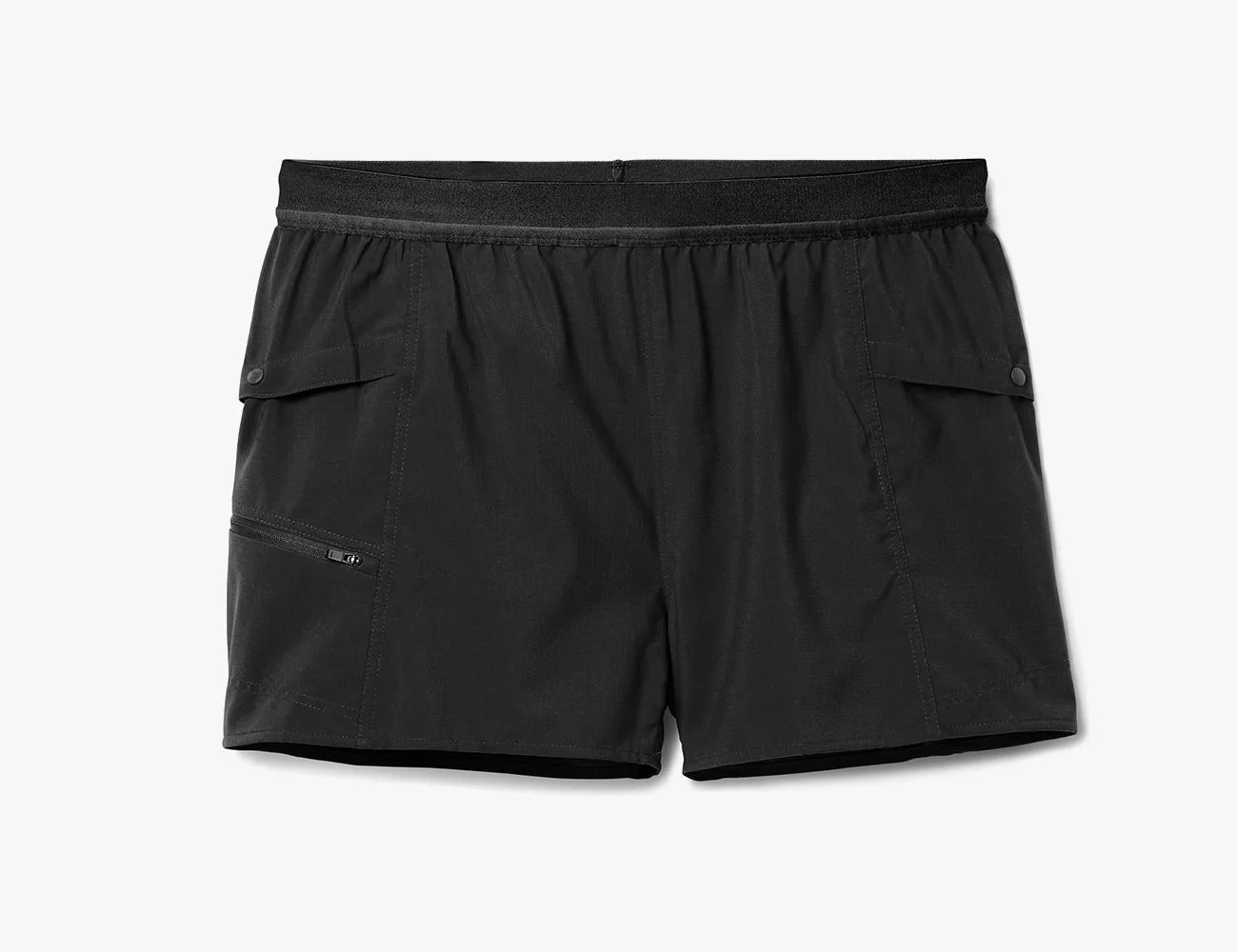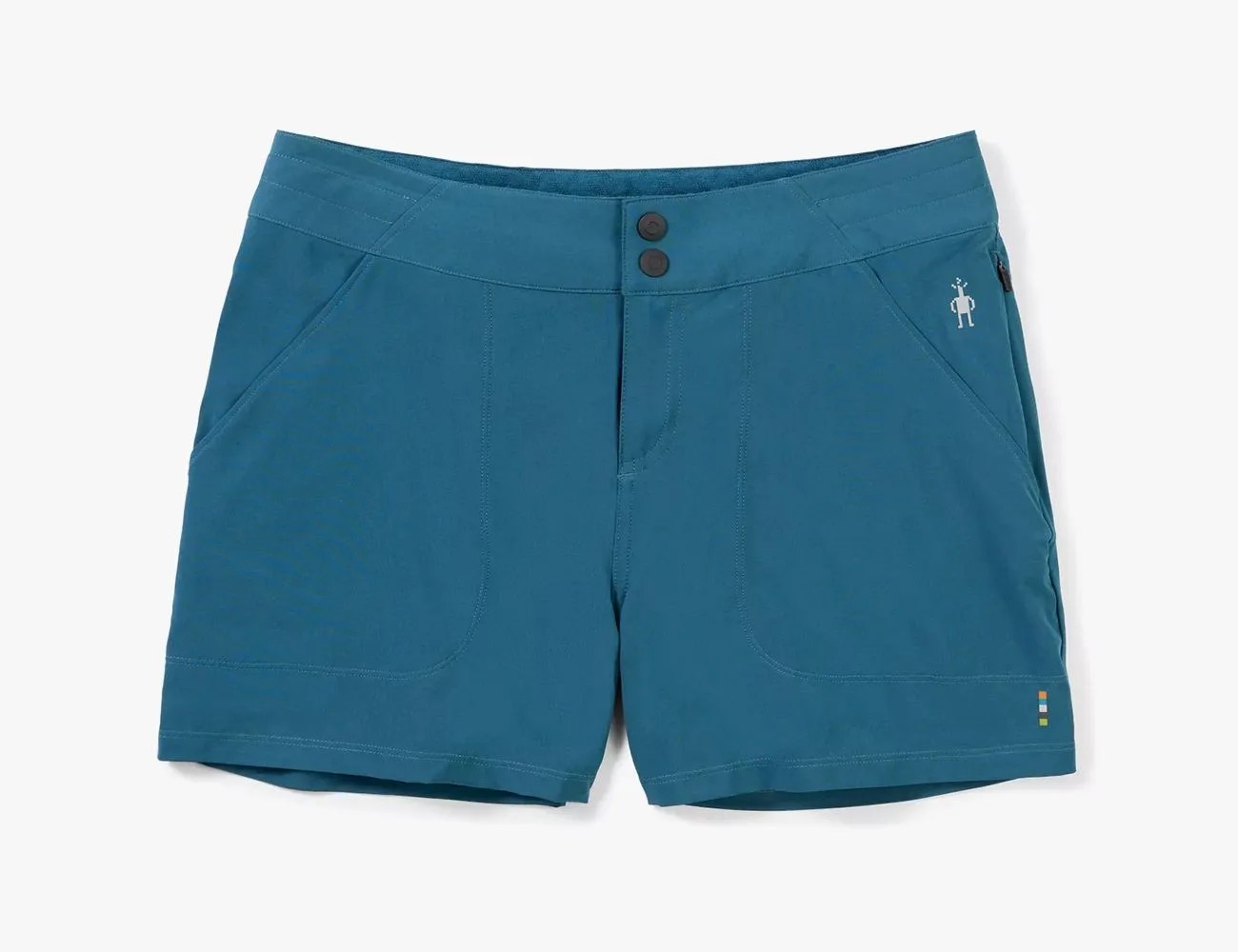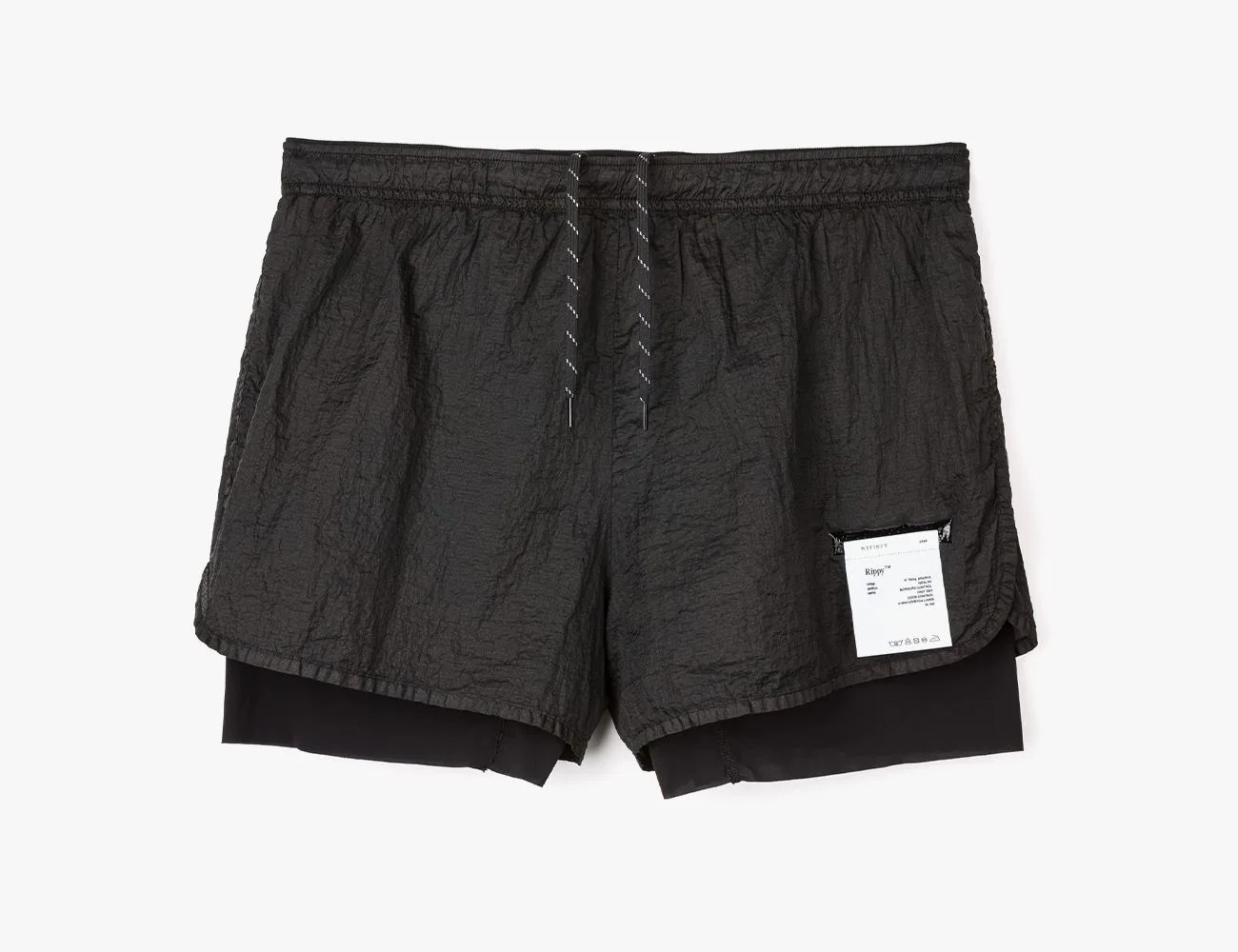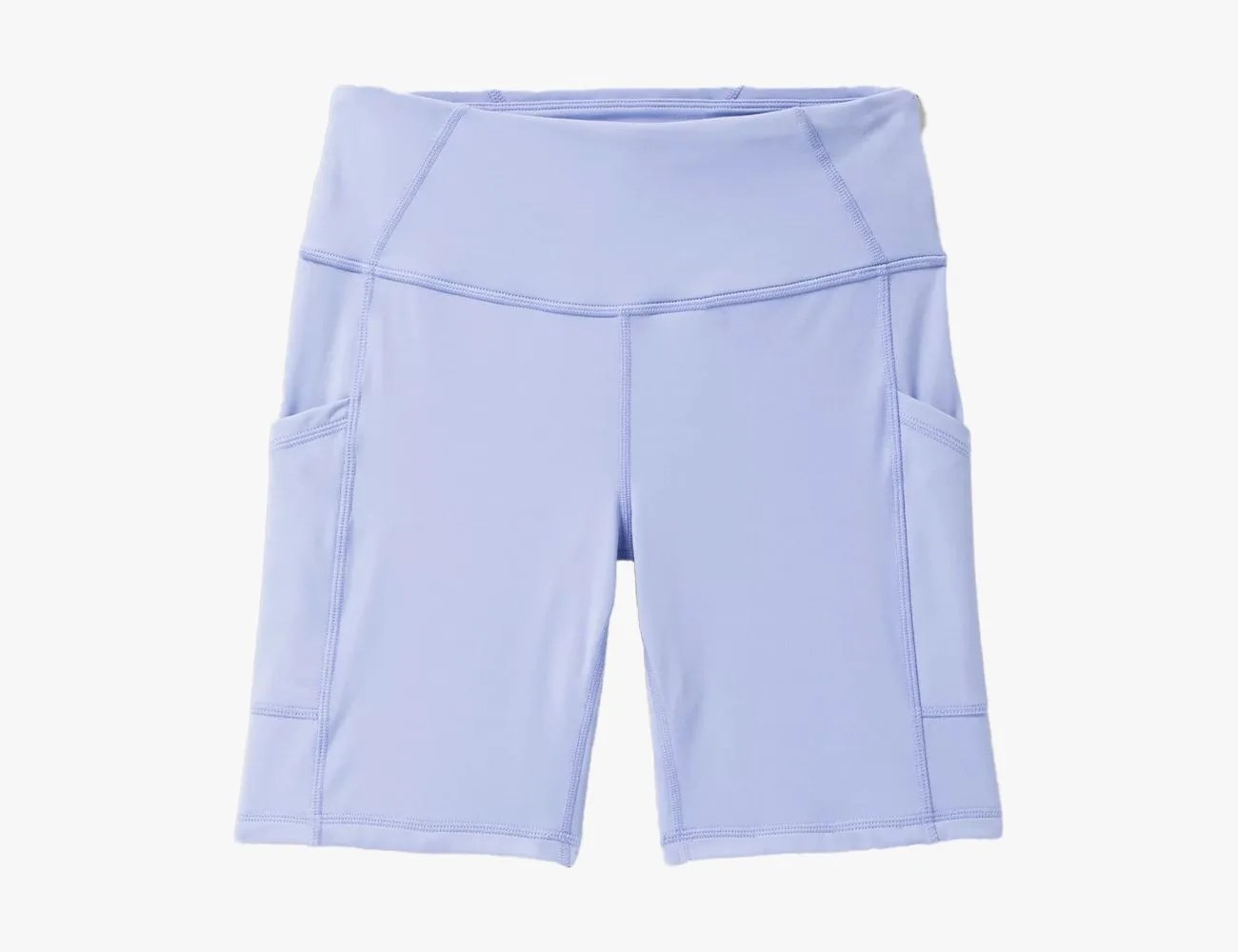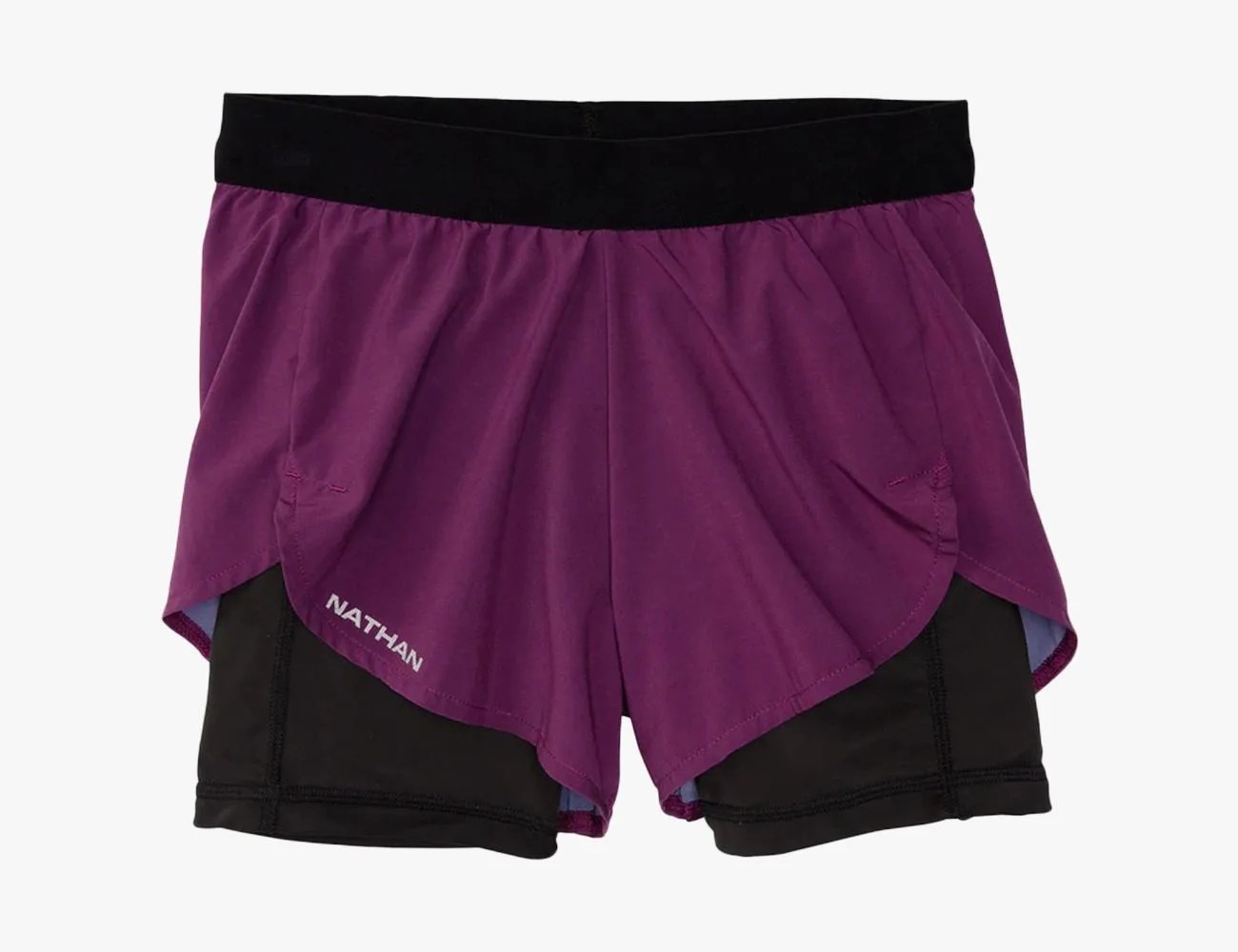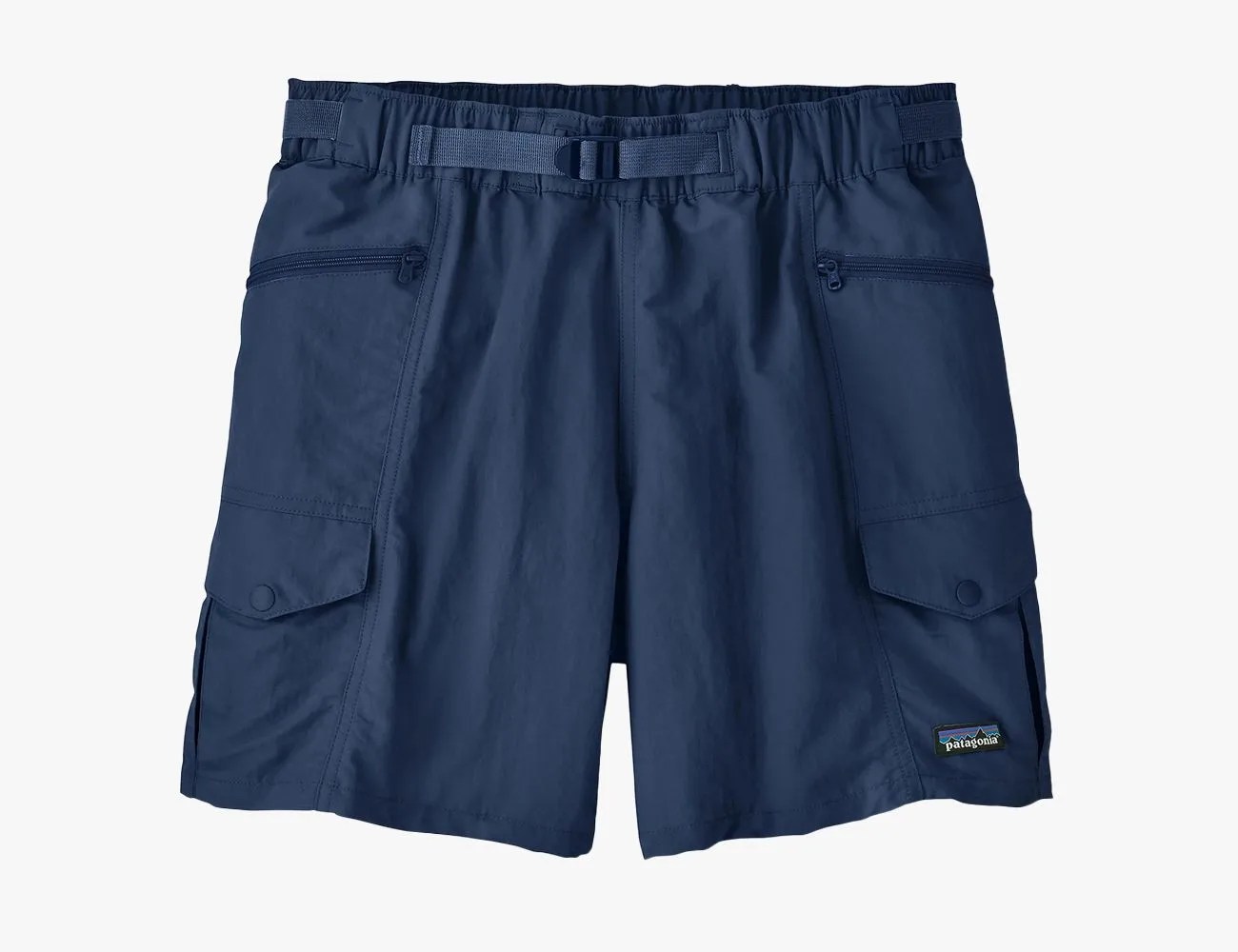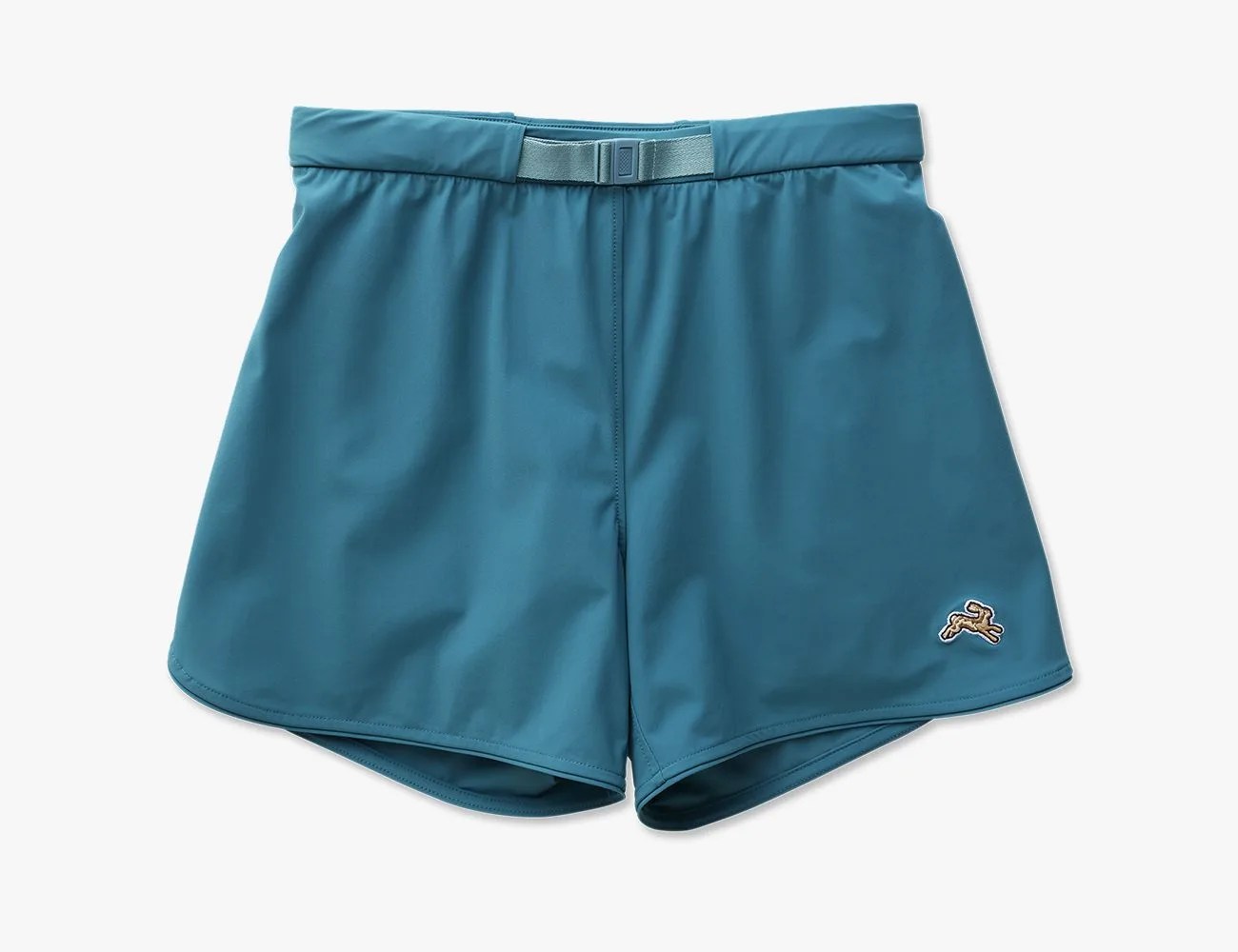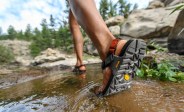For as long as we’ve been walking, we’ve been hiking. The marked trails, well-equipped backpacks and moisture-wicking, quick-drying fabrics of today may look different than what our ancestral wanderers wore, walked and used, but the basic concept is the same: one foot in front of the other, up and down hills, through the woods in communion with the natural world.
Although the act of hiking is one of the simplest and oldest forms of outdoor recreation, the apparel certainly is not. Today’s hiking gear is more functional than the gear of the 20th century, with the addition of 21st century style. Whether you’re new to hiking or just looking to upgrade your kit, there are a few things to consider when it comes to picking out your next pair of trekking shorts.
Products in the Guide
-
Lululemon Multi-Pocket Cargo High-Rise Hiking Short 5
Best Overall Hiking Shorts
Read more -
Athleta Trekkie North Short
Best Affordable Shorts
Read more -
Norrøna Short Tights
Best Bike Shorts
Read more -
Mountain Hardwear Trail Sender Short
Best Lightweight Shorts
Read more -
Smartwool Merino Sport Hike Short
Best Merino Wool Shorts
Read more -
Satisfy Rippy 3″ Trail Shorts
Best Upgrade Shorts
Read more -
Prana Electa Short II
Best Eco-Friendly Shorts
Read more -
Nathan 2.0 Front Runner Shorts
Best Chafe-Resistant Shorts
Read more -
Patagonia Outdoor Everyday Shorts
Best Cargo-Style Shorts
Read more -
Tracksmith Off Roads Shorts
Most Comfortable Lined Shorts
Read more
What to Look for in Hiking Shorts
As you begin to shop for this summer’s go-to hiking shorts, consider the three F’s: fit, fabric and features.
Fit
Hiking shorts have a few common fits: the cargo style short, which typically has a longer inseam and more pockets; the bike short, which is compressive, supportive and offers minimal storage; the running-inspired short, which can come in lined and unlined versions and typically features a 3-inch inseam, and the hybrid, a 2-in-1 short that often combines the anti-chafing and supportive qualities of a compressive liner with the style and breathability of a running short.
Fabric
Everyone has a preference when it comes to fabric: if you’ve got sensitive skin, think twice before buying wool. (This applies less to merino wool, which is softer and thinner than its traditional counterpart). Polyester, nylon and elastane are the three most common fabrics and materials in hiking shorts, but if you’re into more natural fibers, consider merino wool, hemp or cotton.
Features
Which features you require depend entirely on the length and location of your hike. If you’re going out sans backpack but want to have certain necessities like hydration packs, snacks, a pocket knife, smartphone and keys with you, invest in a pair with more pockets and a more supportive waistband that can support the weight of your items. If you’re going on a quick hike and don’t plan on bringing much, or if you’re utilizing a pack and don’t need to rely on your shorts for storage, pick a pair that prioritizes comfort over storage. UPF protection is another common feature to look out for, as well as moisture wicking and breathability.
How We Tested
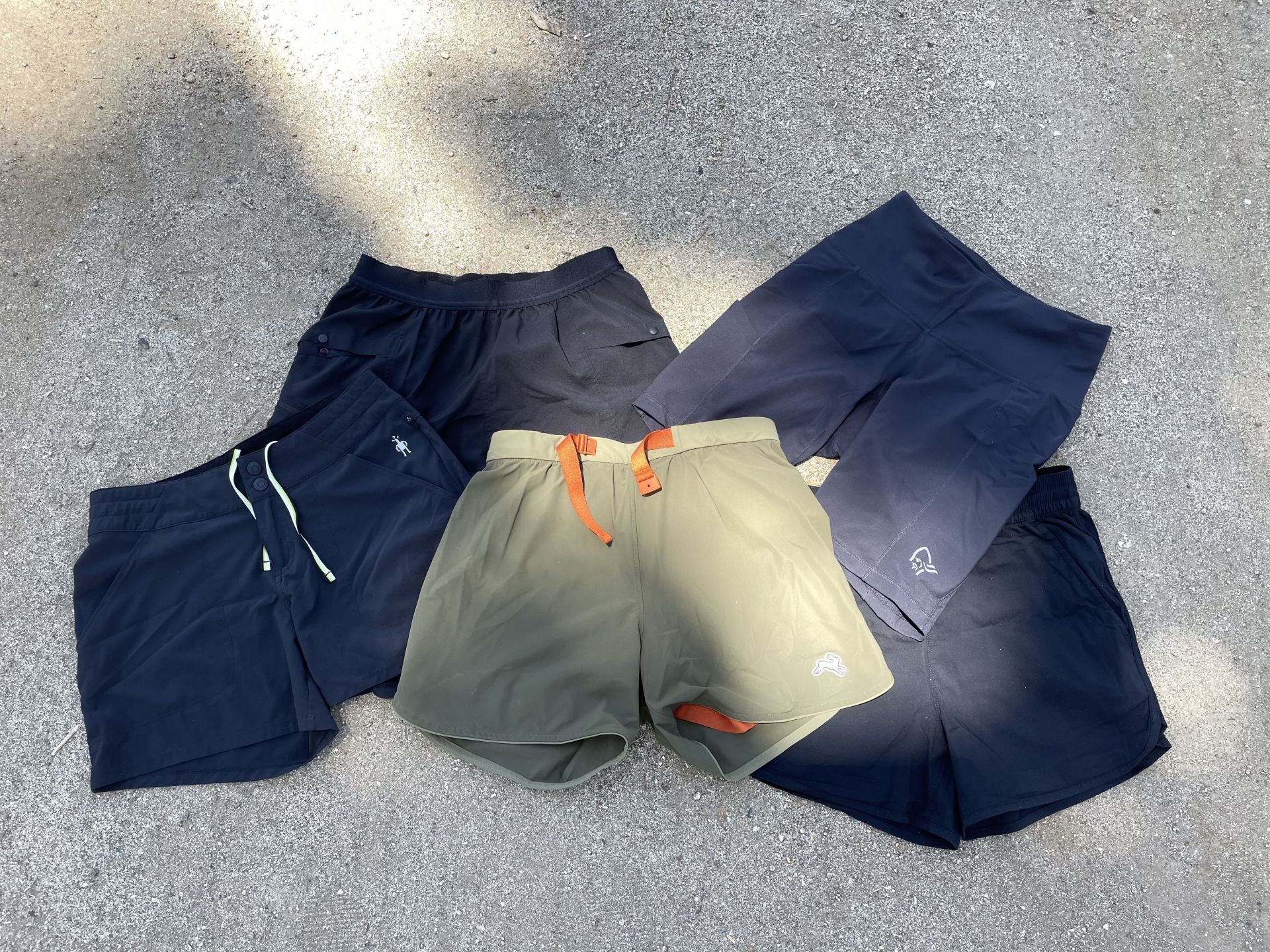 Hayley Helms
Hayley HelmsI took each of these shorts out for at least one month at a time. I hiked in the rain, in the sun, and in multiple environments, including the deserts, mountains and beaches of Southern California. In addition to hiking at least 2o miles in each pair, I also traveled, ran and worked in each short. I considered the three F’s as I tested in each environment.

